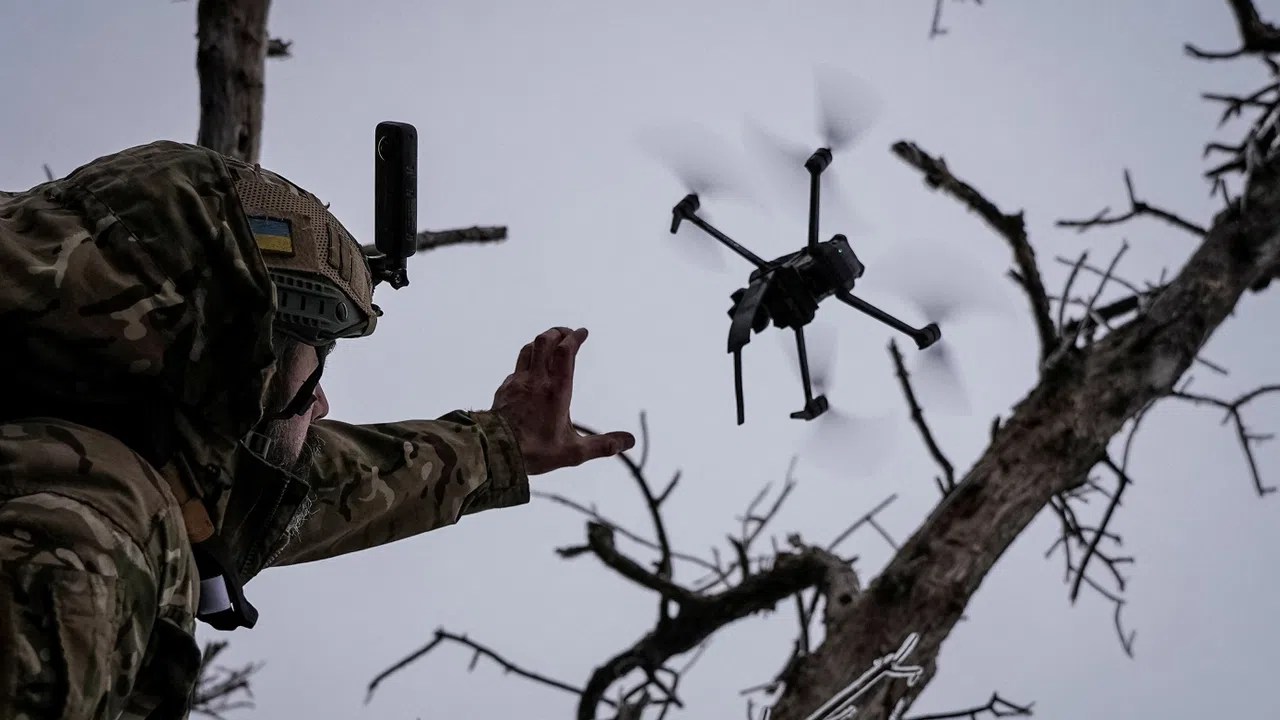
Swiss-Designed Software Steers Kamikaze Drones
- Deutsch de Software für Kamikaze-Drohnen made in Switzerland Original Read more: Software für Kamikaze-Drohnen made in Switzerland Français fr Des drones tueurs fonctionnent avec un logiciel d'origine suisse Read more: Des drones tueurs fonctionnent avec un logiciel d'origine suisse Русский ru Беспилотники-камикадзе и программное обеспечение made in Switzerland Read more: Беспилотники-камикадзе и программное обеспечение made in Switzerland
Autonomous drones are becoming more and more commonplace. In future, they could be delivering the post or transporting life-saving medication and organs between hospitals.
But they can also be used to wage war, and this is precisely what is happening with the technology developed by a company with roots in Zurich.
High-tech, low priceThe origins of the Auterion firm go back to 2008, when founder Lorenz Meier developed technology for self-flying drones at the federal technology institute ETH Zurich. Since then, the invention has been used worldwide. As the company proudly announces on its website, it has even been“nominated by the US government as the standard for its own drone programme”.
Auterion, which has offices in both Zurich and California, is meanwhile behind the PX4 operating system, which allows drones to fly autonomously on autopilot; the Israeli army uses it and the software has also been found in Ukrainian drones.
If drones are controlled remotely, communication with the pilot must be possible at all times. However, enemies can prevent this by using GPS blockers. This is precisely where Auterion's software comes in.“Even if communication is lost, the drone can continue to fly until it is hit,” air defence expert Xavier Tytelman told RTS.
Modules which fly using PX4 or its predecessor Pixhawk can be bought from just €100 euros (CHF98). The software code is open-source and thus freely accessible worldwide. As such, there is a growing concern in military circles about where it could be used.
Israeli military expert Uzi Rubin, who was involved in developing the infamous“Iron Dome” air defence system, told RTS that“anyone can use [the software] to create a weapon of war; the technology and parts are freely available. They can be used by governments, but also by criminal organisations.”
The US recently warned its partners in the Middle East that the Islamic State could use the software to equip its drones.
Israeli and Ukrainian drones, Swiss techAuterion founder Lorenz Meier did not want to comment directly to either RTS or SRF. However, the company confirmed by email that it was aware that the technology was being used in conflict situations. However, the open-source software is used and further developed by thousands of people around the world. It is“the largest ecosystem for developers of autonomous robots in the world”, the company said.
+ Read Auterion's code of ethics hereExternal link
ETH Zurich reacted similarly, but did not want to take a direct stance. The university told RTS by email that“drone manufacturers can use the open source software free of charge and adapt it to their own needs, just as mobile phone manufacturers can do the same with the Android operating system”.
Although it is regrettable that the material is being used for war, the university has no legal recourse.“Technological innovations are not only used for positive purposes, but can potentially also be used in more problematic circumstances,” ETH Zurich wrote.
Contacted by SRF, Auterion wrote on April 26:
“Auterion's business model is based on our unique expertise in software which is widely available through an open source architecture. This software was developed at ETH Zurich, but is now used and developed by thousands of people worldwide.
It is not just excellent software, but the world's largest developer ecosystem for autonomous robots. We are proud that it was developed in Switzerland, even though it is now operated from the US.
Software such as PX4 and Pixhawk enable civilian transport and deliveries around the globe. However, they can also be used for military purposes if the open source software is accessed. This applies to all dual-use technologies.”
Whether the software falls under the scope of the Swiss War Materiel Act (which bans the export of Swiss-made weapons to war zones) is questionable. The State Secretariat for Economic Affairs (Seco) told RTS that at first glance, remote control tools can be considered“open source” and would thus not fall under current export control rules.
However, Seco also clarified that software which could be used for war purposes is indeed on the list of goods whose export was banned by a government decision following Russia's attack on Ukraine in 2022. In other words, it's a legal grey area.
The report was originally published by RTSExternal link ; this article is an adaptation from SRF's German version, by DeepL/dos
In compliance with the JTI standards
More: SWI swissinfo certified by the Journalism Trust Initiative
You can find an overview of ongoing debates with our journalists here . Please join us!
If you want to start a conversation about a topic raised in this article or want to report factual errors, email us at ... .

Legal Disclaimer:
MENAFN provides the
information “as is” without warranty of any kind. We do not accept
any responsibility or liability for the accuracy, content, images,
videos, licenses, completeness, legality, or reliability of the information
contained in this article. If you have any complaints or copyright
issues related to this article, kindly contact the provider above.


















Comments
No comment